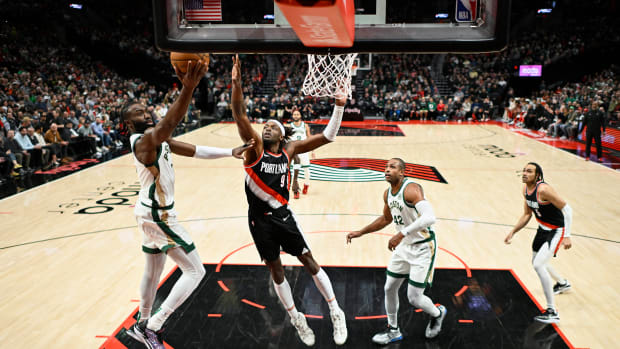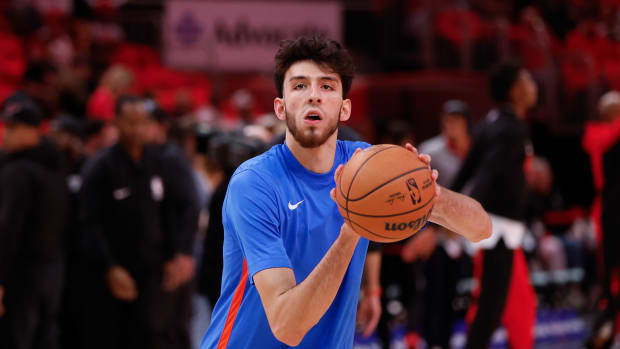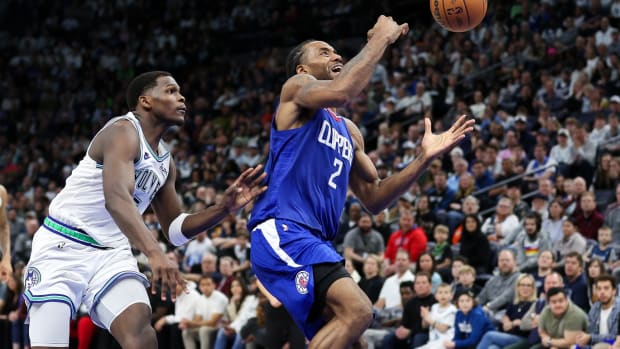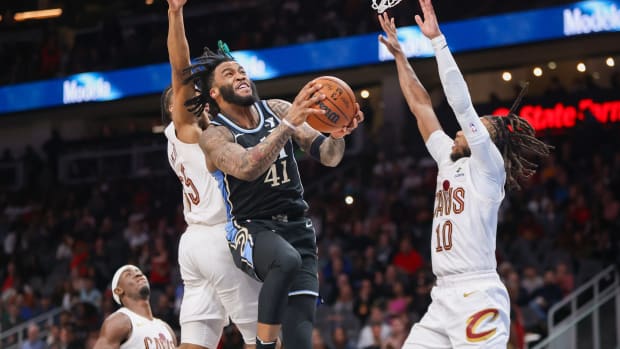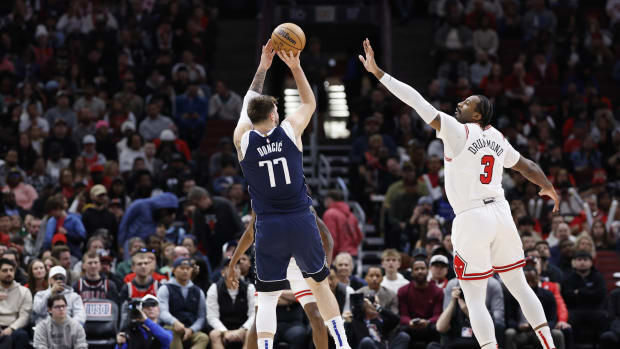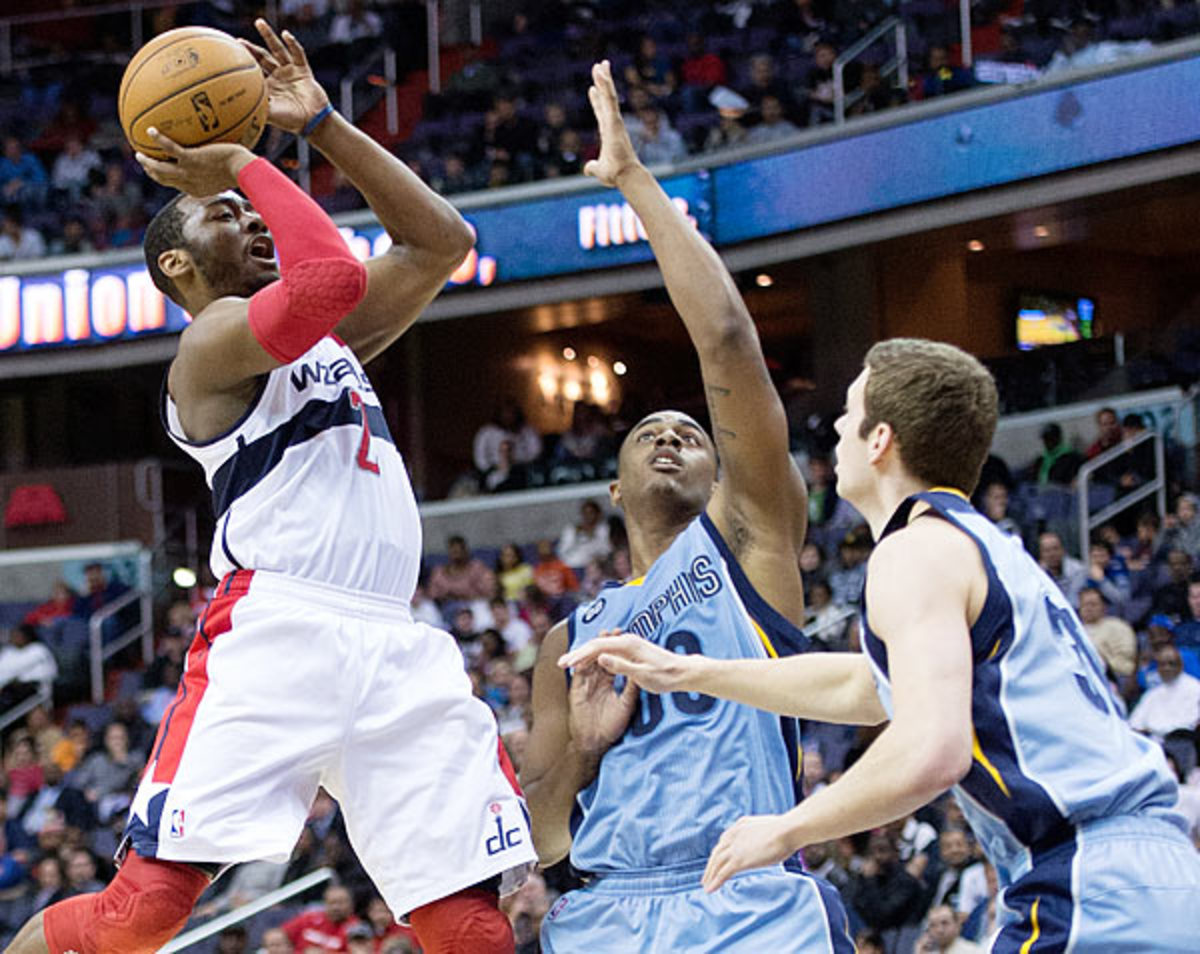
Offseason Grades: Washington Wizards
John Wall signed a five-year, $80 million extension this summer. (Harry E. Walker/MCT via Getty Images)
The Point Forward will grade every team’s offseason over the next few weeks. Click here for the complete archive.
Additions:Eric Maynor, Otto Porter (No. 3 pick in 2013 draft), Al Harrington, Glen Rice Jr. (No. 35)
Losses: None yet officially?
Other Moves: Re-signed John Wall, re-signed Martell Webster, re-signed Garrett Temple, retained Trevor Ariza (player option), retained Emeka Okafor (player option)
What Went Right: Summer 2013 will go down as smooth sailing for Wizards management. The front office, clearly buying into its roster's potential with a healthy Wall, decided to bring back the band and make only minor tweaks.
Goals that were accomplished, with relative ease, included: signing Wall to a five-year, $80 million extension, a deal that established him as the face of the franchise; snagging long-rumored draft target Porter, a third up-and-comer to join the dynamic Wall/Bradley Beal backcourt duo; adding Maynor on the cheap (two years, $4.1 million) to shore up a woeful backup point guard position; re-signing Martell Webster, a serviceable, floor-spacing wing who can keep the seat warm as the Wizards wait on Porter's development; and taking a low-cost flier on Harrington, who could add frontcourt depth if he manages to bounce back from 2012 knee surgery and a lost year with the Magic.
Washington's 2012-13 season, as has been noted repeatedly, was a tale of hope with Wall and hopelessness without him. The contrasts, one more time: a 24-25 record with Wall (including 14-12 against playoff teams) compared to a 5-28 record without him, and a 102.1 offensive rating with him (which would have been a league-average mark for a full season) compared to an absolutely horrid 94.8 offensive rating without him. The Wizards can't be blamed for reasoning that a full season with Wall, Year 2 growth from Beal, something from Porter and regression from some other Eastern Conference teams should equate to the franchise's first postseason berth since 2008.
What Went Wrong: Virtually every one of the moves mentioned above carries second-guessing potential. The biggest, by far, is the extension for Wall, given the monster money involved and the full five-year term. His impact was clear last year and he seems poised to start turning his potential into reality, but critics will wonder whether the Wizards rushed into this deal with a 22-year-old point guard with limited shooting range, turnover issues and a knee injury in his recent past.
Webster's four-year, $22 million deal (which includes a nonguaranteed fourth year) looks no better than fair as it stands, and it could prove to be burdensome if back injuries that limited him from 2010-12 pop up again. Maynor is clearly not the same player he was before tearing his ACL in January 2012, and while he should be an upgrade over the likes of A.J. Price and Shaun Livingston, he struggled defensively and with his shot last season.
Meanwhile, Porter's early returns at the Las Vegas Summer League weren't the greatest. He averaged just 6.3 points and 3.7 rebounds while shooting 30 percent from the field, and his week was cut short with a minor hamstring injury. His inability to stand out in the summer-league setting was predictable, given the complementary nature of his offensive game, but his lack of a real impact on either end hinted that he could be in for a gradual acclimation to the Wizards' rotation.
Questions remain about Washington's frontcourt depth, too -- questions that Harrington's addition can't answer. The calculated gamble at play here is straightforward: As long as Emeka Okafor and Nene remain relatively healthy, the Wizards should be able to get by. If either one goes down, though, this plot gets a lot more interesting.
Grade:
B-minus































